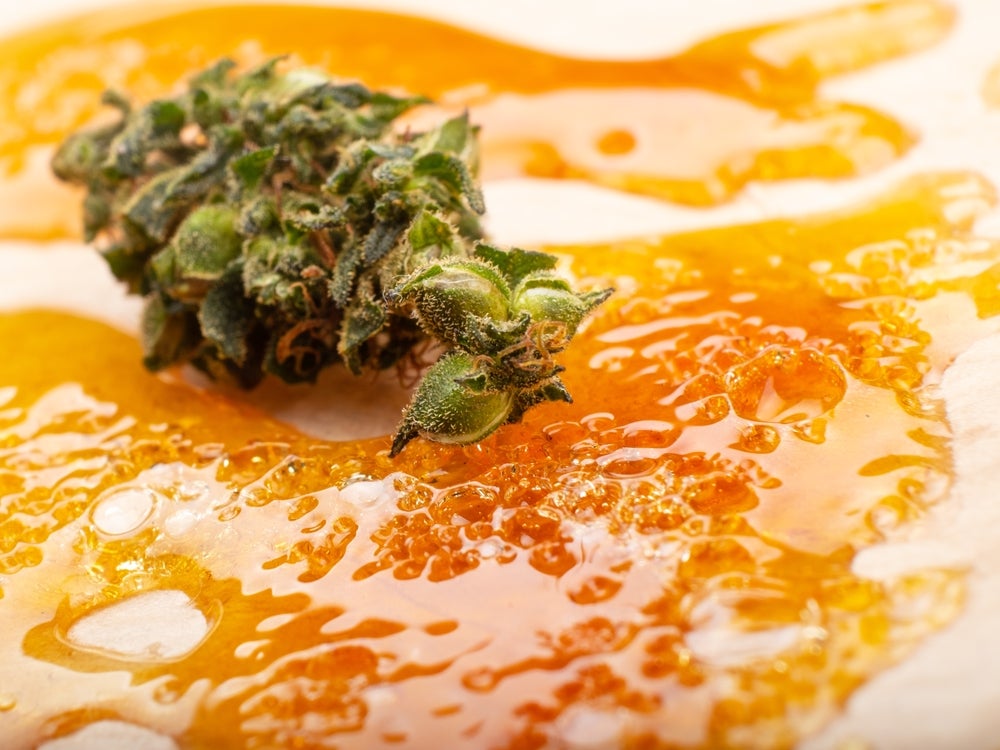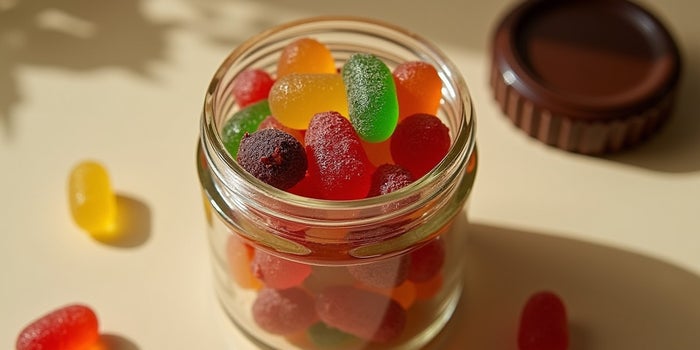Table of Contents
- What Is THC Distillate?
- How Much Flower Will I Need?
- How Is THC Distillate Made?
- What Is THC Distillate Used For?
- Is It Potent?
- Final Thoughts
- FAQs
Making THC Distillate, also known as “The Clear,” is one of the most popular ways to enjoy marijuana’s therapeutic benefits. With its ease of use, long shelf-life, and high potency, THC Distillate is becoming a go-to for many cannabis connoisseurs.
Due to its potency and versatility for making tinctures, oils, edibles, and topicals, THC Distillate is quickly becoming a staple in marijuana products.
If you are curious to know this, read on to discover how to make THC distillate and all its uses. You’ll also find information on safety and tips on making the best distillate possible. With the right tools and know-how from this blog post, you can quickly turn raw bud or trim into premium cannabinoid distillate without sacrificing quality or safety. So, let’s get started.
What Is THC Distillate?
THC distillate is a highly refined cannabis extract, usually produced through a sophisticated process that combines solvents, filtration, and distillation. They are known for their high potency levels, boasting tetrahydrocannabinol (THC) contents of over 99%.
THC distillates are sought after as this quality makes them especially powerful in terms of flavor, aroma, and effects. Creating THC distillate also removes fat-soluble compounds, making it ideal for many forms of medication or recreational use.
It’s also a versatile product used in vape cartridges, edibles, tinctures, and more. THC Distillates offer a much higher delivery rate than other commonly used cannabis products like dry flower and live resin, making them increasingly popular recreationally and medicinally among consumers.
For anyone looking to experience the entourage effects of THC and other cannabinoids in their purest form, THC Distillate is an excellent option.
Understanding the Cannabis Plant
The cannabis plant is a fascinating and complex organism, boasting over 100 different cannabinoids, including the well-known THC and CBD. These cannabinoids are produced in the plant’s trichomes, which are tiny, resinous glands found on the surface of the leaves and flowers. The cannabis plant is cultivated for both its medicinal and recreational properties, and it serves as the raw material for a variety of products, including cannabis distillate.
Cannabis plants can be grown either indoors or outdoors, but they require a controlled environment to thrive. Typically, they are cultivated in a soil-based medium and need regular watering and fertilization. Pruning and training the plants are also essential practices to promote healthy growth and maximize yields.
Interestingly, the cannabis plant is dioecious, meaning it has separate male and female plants. The female plants are particularly prized because they produce the buds that contain the highest concentration of cannabinoids. In contrast, male plants produce pollen, which is used to fertilize the female plants. Understanding these basics about the cannabis plant is crucial for anyone looking to produce high-quality cannabis distillate.
How Much Flower Will I Need?

Photo by Alexander Grey on Unsplash
The amount of flower needed to make THC distillate depends on several factors, including the potency of the flower and the desired yield. Generally, each gram or milliliter of the final product will need between 0.5 and 1.5 grams of high-quality cannabis material. You may need up to 2-3g/mL when using low-grade material.
When it comes to determining the exact amount of flower required for a certain amount of THC distillate, there are some factors you’ll need to consider. First, the cannabinoid content of your flower is essential. Higher potency flowers will require less than lower potency flowers to achieve your desired distillate yield. The initial extraction process yields crude oil, which is then further refined to produce THC distillate.
Also, it would be best if you considered that some cannabinoids are lost during the process due to decarboxylation, so keep this in mind when calculating how much flowers you’ll need. The method used for extraction also matters when determining how much flower is necessary for a given batch of THC distillate.
More efficient processes, such as Supercritical CO2 extraction, yields more THC from a given amount of flower compared with other methods, like butane or ethanol extraction, which require more starting material for an equivalent yield.
Equipment Needed for Cannabis Distillation
Creating high-quality cannabis distillate requires specialized distillation equipment designed to handle high-temperature and high-pressure conditions. The key pieces of equipment include distillation columns, condensers, and vacuum pumps, all made from materials resistant to corrosion and contamination.
The distillation column is the heart of the distillation process. It separates the different components of the cannabis extract based on their boiling points. Typically made from heat-resistant materials like stainless steel or glass, the column must withstand high temperatures to function effectively.
Next, the condenser plays a crucial role in cooling the vapor produced during the distillation process. Made from heat-exchange materials such as copper or stainless steel, the condenser efficiently cools the vapor, converting it back into a liquid form.
Finally, the vacuum pump is essential for creating the vacuum environment necessary for the distillation process. Constructed from durable materials like stainless steel or aluminum, the pump is designed to handle high-pressure conditions, ensuring the distillation process runs smoothly.
Investing in high-quality distillation equipment is vital for producing a pure and potent cannabis extract.
How Is THC Distillate Made?
The process of making THC Distillate is a complex one that requires expensive and advanced equipment, but it also produces exceptionally pure and potent extracts. You can think of it as a purification process that isolates and refines individual cannabinoids from Cannabis plants. There are various methods to make cannabis distillate, including fractional distillation and short path distillation. The following section will provide a step-by-step guide on how to make THC distillate.
Step 1: Primary Extraction
This step involves extracting cannabinoids from plant material, such as trichomes found on the flowers and leaves of cannabis plants. This is usually done through ethanol, hydrocarbon, or supercritical CO2 extraction. Different extractions will yield different results depending on what type of product is desired in the end.
Ethanol Extraction Process
Ethanol Extraction involves using food-grade ethanol as a solvent to separate cannabinoids from plant matter. It is an ideal method for extracting high-purity cannabinoids, terpenes, waxes, and other compounds for medicinal tinctures and concentrates.
Ethanol extraction is also relatively quick, inexpensive, and easy to scale up or down by demand. However, since ethanol evaporates quickly at room temperature, some residue may remain behind, which needs further refining through additional steps like distillation before being consumed safely by consumers.
Hydrocarbon Extraction
Hydrocarbon extraction is a closed-loop system that uses hydrocarbons like butane or propane as solvents to extract cannabinoids from the plant material. This method has become increasingly popular in the cannabis industry due to its ability to produce high-quality cannabis concentrates with a high return rate quickly.
Unlike ethanol extraction, the hydrocarbon extraction process occurs in a sealed chamber and is not exposed to the atmosphere. This allows for more precise temperature and pressure control during the extraction process, making it possible to preserve more delicate compounds found in cannabis plants.
However, hydrocarbon extractions are generally more expensive than ethanol and can be dangerous when not done correctly.
Subcritical CO2 Extraction
Subcritical CO2 extraction produces exceptionally pure and potent THC distillates, making it the most popular method. This process involves passing carbon dioxide (CO2) through heated cannabis material in a closed-loop system, where it is pressurized until it becomes a supercritical fluid, meaning it has both the properties of a gas and a liquid.
CO2 extractions are considered the most efficient and safest extraction, as the process does not leave any residual solvents that can contaminate the finished product. This method is also cost-effective, making it ideal for large-scale commercial production.
The subcritical CO2 extraction method also allows for a broader range of uses, including tinctures, topicals, edibles, and vaporizable concentrates.
Step 2: Winterization & Filtration
After the primary extraction process is complete, raw extracts often contain residual impurities like lipids, waxes, and other compounds that could potentially cause adverse reactions if consumed directly.
To ensure these compounds are entirely removed before consumption, a process known as winterization is often used. This process involves slowly cooling the extract to a cold temperature of about -60°C (-76°F), followed by activated carbon or silica filtration.
This step removes most of the remaining plant waxes, lipids, and residual solvents from the extract, producing a much purer product.
Step 3: Decarboxylation
The next step in the process of making THC Distillate is decarboxylation. This process involves heating the winterized extract to temperatures upwards of 107°C (225°F) for a period determined by the desired potency level.
Decarboxylation activates the cannabinoids in the extract by converting CBDA or THCA into THC or CBD. By decarbing the concentrate, you can ensure that your distillate will contain a higher potency of psychoactive compounds, allowing for a more potent product.
The decarboxylation temperature should be carefully monitored so as not to overheat or burn off any essential compounds within your extract.
Step 4: Distillation
After the winterization and decarboxylation processes are complete, the extract is ready for distillation. During this step, volatile chemical compounds within your extract – like THC – are separated from non-volatile chemical compounds such as fats and waxes by taking advantage of their differing boiling points at various temperatures.
Fractional distillation is a more precise and slower technique that focuses on separating cannabinoids with similar boiling points. This process causes the cannabinoids to evaporate and be collected as a vapor. This vapor is then cooled, condensing it into a liquid form that can be easily separated from other compounds.
Short path distillation employs heat and vacuum pressure to efficiently separate cannabinoids and terpenes from crude oil. The collected liquid is further refined, removing any remaining impurities and producing a highly potent, pure THC distillate.
Tips for Enhancing the Quality of THC Distillate
Producing top-notch THC distillate involves more than just following the basic steps of the distillation process. Here are some tips to help you enhance the quality of your THC distillate:
- Use High-Quality Cannabis Material: The quality of the starting cannabis material significantly impacts the final product. High-quality cannabis material will typically yield a higher-quality distillate, so always opt for the best you can find.
- Control the Distillation Process: Precision is key in the distillation process. Carefully control the temperature, pressure, and flow rate to ensure optimal separation of cannabinoids. This meticulous control can lead to a purer and more potent distillate.
- Use the Right Equipment: High-quality distillation equipment can make a significant difference in the final product. Ensure that your equipment is designed to handle the specific requirements of cannabis distillation, including high temperatures and pressures.
- Test the Distillate: Regularly testing your distillate for purity and potency is crucial. This helps ensure that the final product meets the desired standards and is free from contaminants.
By following these tips, you can produce a THC distillate that is both pure and potent, providing the best possible experience for consumers.
Common Challenges and Troubleshooting
The cannabis distillation process can present several challenges, but understanding these common issues and knowing how to troubleshoot them can help you produce a high-quality distillate.
- Contamination: Contamination can occur at various stages of the distillation process, leading to a lower-quality distillate. This can be caused by poor equipment maintenance or inadequate cleaning procedures. To prevent contamination, ensure that all equipment is thoroughly cleaned and maintained regularly.
- Equipment Failure: Equipment failure is another common issue that can affect the quality of the distillate. This can result from poor maintenance or inadequate training. Regularly inspect and maintain your equipment, and ensure that all operators are properly trained to handle the distillation process.
- Inconsistent Results: Inconsistent results can be frustrating and are often caused by variations in the distillation process. This can include fluctuations in temperature, pressure, or flow rate. To achieve consistent results, closely monitor and control all aspects of the distillation process.
Troubleshooting these challenges involves identifying the root cause of the problem and taking corrective action. This may include cleaning and maintaining equipment, re-training staff, and adjusting the distillation process to ensure optimal performance.
By addressing these common challenges, you can improve the quality and consistency of your cannabis distillate, ensuring a superior product for your consumers.
What Is THC Distillate Used For?
Once the process of making THC Distillate is complete, let us examine how to use THC distillate.
- Medical Marijuana: THC Distillate can be used as a form of medical marijuana, relieving patients from chronic pain, anxiety, stress, and depression. It can also help with appetite stimulation and nausea control.
- Edibles: By combining the distillate with an oil-based product such as coconut oil or butter, it can be used to make various edible products like brownies, cookies, and gummy candies. These edibles are usually more potent than smoked products because the distillation removes impurities that may affect potency levels.
- Vaping: THC Distillate is ideal for vaping, as it is already in a liquid form and is 100% pure cannabis extract that has been further refined. This also helps to ensure that users get the maximum potency per dose.
- Topical Creams: Adding THC Distillate to creams or lotions can create topical applications that provide both analgesic and anti-inflammatory properties when applied directly to the skin. This makes them particularly beneficial for treating issues like muscle strains and inflammation due to arthritis.
- Dabbing: Dabbing involves using a dab rig (or other similar devices) to heat a small amount of distillate and then inhaling it through a vape pen or other device. This method provides users with an incredibly potent experience due to the high concentration of active cannabinoids in each dose.
Is It Potent?
Yes, THC Distillate is incredibly potent. It is a highly concentrated cannabis oil stripped of all the plant material, fats, and waxes, leaving behind a pure crystalline extract that boasts an exceptionally high cannabinoid content.
THC distillate typically contains around 99% THC, meaning it is much stronger than traditional marijuana strains, which usually contain 18-20% THC. This makes THC distillate great for medical users who need the intense effects of cannabis but don’t want to consume large quantities to achieve it.
Not only does it offer psychoactive effects, but because it is so pure, there are no other compounds present that could interfere with the user’s desired result. It also eliminates any potential risks from consuming other cannabinoids or terpenes.
Additionally, because it is refined, the taste and smell are mild compared to other cannabis concentrates. The taste has been described as “clean” and “odorless,” making it ideal for those who need to medicate discreetly without drawing attention to themselves.
Final Thoughts
Making THC distillate is an intricate process that requires advanced equipment and careful attention to detail. While DIY enthusiasts can make their distillates, it’s highly recommended that you seek professional help from experienced extractors.
You may also purchase the product from a reputable source if you want to experience the entourage effects of THC and other cannabinoids in their purest form.
For those looking for top-notch THC distillate and many other pure THC Distillate products, Kootenay Botanicals has you covered. We offer the highest quality THC Distillate on the market, crafted from premium, organically sourced materials. Visit our website to learn more about our products, and order yours today!
FAQs
What Is the Difference Between THC Oil and Distillate?
THC oil is an extract that usually contains more of the plant’s original compounds, such as lipids, waxes, and other cannabinoids like CBD. This makes it more like a full-spectrum extract. In contrast, THC Distillate is a concentrated version of the cannabis plant that has been refined to remove all other compounds and isolate the desired cannabinoids.
How Do You Make THC Extracts?
THC is extracted from cannabis plants using a solvent. Extractions use ethanol, hydrocarbon, and supercritical CO2. The extract is winterized and filtered to remove contaminants before decarboxylating to activate cannabinoids. Distillation isolates and purifies THC and other cannabinoids.
What Is Stronger, Distillate or Concentrate?
Distillates are much stronger than concentrates, as they contain a higher concentration of cannabinoids and lack the flavor and aroma of concentrates.
Is Distillate Stronger Than Dabs?
Yes, distillate is generally considered stronger than dabs because it has a higher THC content and is more refined than regular dabs.
Can Distillate Get You High?
While distillate is not psychoactive, depending on the product and ingredients added to it, consuming distillate can get you high, as with any intake of THC.
How Much Is Distillate Worth per Gram?
The cost of distillate per gram depends on the quality and supplies available in the market but typically ranges between $20-50.
How Much Flower Does It Take To Make a Liter of Distillate?
It takes around 500-800g of flower material to make 1 liter of distillate, depending on the amount and potency of cannabinoids present in the material. The greater the concentration of cannabinoids, the less material you need to produce a product with higher overall strength and effect.
Is Distillate the Most Potent?
Yes, distillates are the most potent form of cannabis that you can consume, with some extracts reaching up to 99% THC content.



